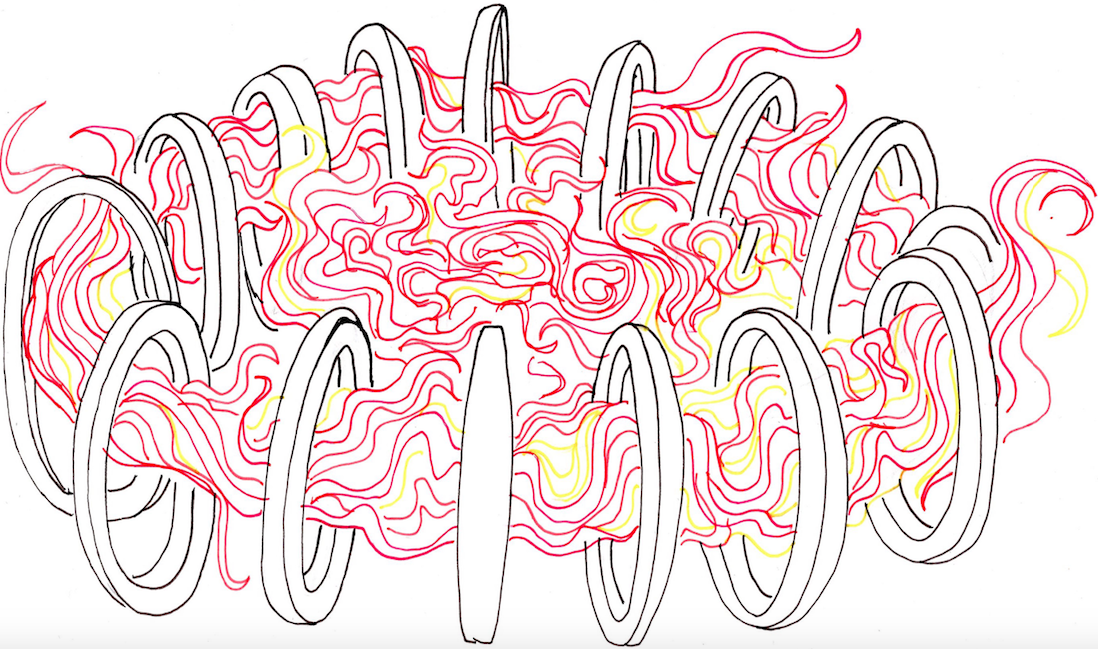What if you tried to bottle the sun? What if you tried to build a star on Earth?
Canadian filmmakers Mila Aung-Thwin and Van Royko’s documentary Let There Be Light follows several teams of scientists around the globe attempting to channel the sun’s energy to solve the global energy crisis. In the French countryside, they are building the world’s most complex machine: an artificial star that will provide perpetual, cheap, and clean energy for all mankind. This Herculean task is aggravated by political misunderstandings, and funding issues which have significantly delayed its construction. The film explores the rise of the project in the mid-20th century and the subsequent decades of disappointment and disillusion, due to the failure of the first experiments and the ever-growing cost of construction. However, fusion, which seeks to extract energy from a magnetically charged cloud of hydrogen gas, has seen a resurgence in the 21st century, with a hopeful outlook in the decades to come.
Let There Be Light certainly isn’t a boring scientific documentary: it’s a touching portrayal of hundreds of people working to bring an almost impossible concept to life. Beautifully animated sequences introduce several long-dead thinkers and eccentric visionaries who birthed the project, allowing us to delve into its fascinating history. Itís also an incredibly personal work of art, as it depicts scientists in a realistic, faithful manner, instead of their usually detached portrayal in the media. All these elements allow us to empathize with the people working tirelessly to stop us from destroying our planet… and ourselves.
Alternating between aerial shots of breathtaking natural landscapes and sterile concrete buildings, of lush forests and suffocating factories, Let There Be Light compels us to meditate upon our impact on the environment. In our struggle for survival, weíve been bleeding the Earth dry of fossil fuels for decades. In a world rapidly running out of energy, fusion research could be our last chance of salvation. The documentary perfectly illustrates this race against the clock. From recognized scientists to eccentric inventors building monstrous machines in their garage, all agree that fusion represents humanityís last hope. However, the experiment has drawn numerous critiques from the general public and the scientific community, who judge fusion to be unattainable. The sheer scale of the project can certainly seem daunting, but is fusion really a waste of time?
Let There Be Light premiered in Montreal on September 15th. Co-director Van Royko then sat down to answer some of the audience’s questions.
Q. Did the documentary attract any new investors in fusion research?
A. I don’t think new investors joined specifically because of the film, but it’s doing a great job bringing awareness to fusion, which is still a relatively unknown alternative energy source. I’ve also heard Google is using its computers to help solve algorithms and apparently they’re really interested in the project. A lot of new countries are also interested in joining, like Kazakhstan and Iran.
Q. What is Canada’s part in fusion?
A. Making this documentary? [laughs.] Canada actually wanted to be involved in the beginning; they wanted the machine to be built on Canadian soil because of the absence of seismic activity, which makes it an ideal place for it to be built. But in the end it was between France and Japan, and they ended up choosing the South of France because it’s wine country I guess? But Japan got to appoint the first two directors of the project, who have incidentally been blamed for the significant delays. So yeah, I donít know if Canada was insulted not to be chosen or something, but at least we made this documentary.
Q. Do you believe in fusion?
A. Absolutely. I definitely believe in fusion and like, in the film theyíre talking about using sea water to produce energy with fusion, and I don’t want you to think they’re just gonna empty the ocean. They just take a few isotopes, then dump the water back into the ocean. It’s clean and cheap and lasting, and I think that with definitive funding it could absolutely work.
Q. What can you tell us about filming?
A. We worked with a very small crew, most of the time it was just Mila and me, and I think thereís a lot of things we couldn’t have done with a bigger crew. We just talked to all the scientists extensively, we were able to capture some small funny moments, some touching moments. By the way, this whole thing is completely Mila’s brain-child. He wrote, directed, and edited everything. I was there for most of the filming, but it’s really all his.

